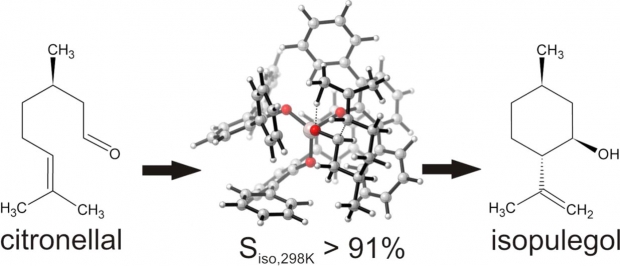A breathing zirconium metal-organic framework with reversible loss of crystallinity by correlated nanodomain formation
Abstract
The isoreticular analogue of the metal–organic framework UiO-66(Zr), synthesized with the flexible trans-1,4-cyclohexanedicarboxylic acid as linker, shows a peculiar breathing behavior by reversibly losing long-range crystalline order upon evacuation. The underlying flexibility is attributed to a concerted conformational contraction of up to two thirds of the linkers, which breaks the local lattice symmetry. X-ray scattering data are described well by a nanodomain model in which differently oriented tetragonal-type distortions propagate over about 7–10 unit cells.

 Open Access version available at
Open Access version available at 